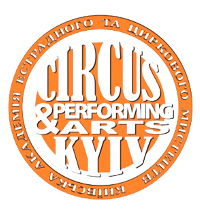Light music as an effective means of integrating movement in design and artistic practice of the last quarter of the XXth century
Abstract
The publication is a continuation of the author's series on synaesthetic theory and its application in design practice of the 20th century. Methods corresponding to the systematic art history approach are used: sociological, in which culture is considered as a factor in the organization of public life and the formation of intellectual landscape, biographical for analyzing the main periods of these artists' creative activity, and systematic for stating the ways in which the movement is transmitted in environmental projects and artistic practices. The methodology of field research gave the work practical significance through the content of interviews with participants in cultural and artistic processes. The problem of using light and music techniques in domestic design and art projects of the last quarter of the 20th century is highlighted. Concrete examples prove that kineticism at the end of the 20th century played the role of a kind of laboratory for the study of the variability of the world as a new potentiality, and light and music were chosen as popular means of integrating the idea of movement into everyday life. Popular centers and circles of light music interests and public demonstrations in Ukraine in the 1960s and 1970s are named. Special attention is paid to the transition from the theoretical and experimental researches of Alexander Scriabin, Mikaloyus Čiurlionis, Mykola Roerich, Florian Yuriev to the practical application of light music in spectacular culture and design practice. The works of Daniel Fridman, Georgy Larionov, Serhiy Pravdyuk, Bohdan Gubal, Alla Dutkivska, Petr Starukh, Myroslav Yaremak were analyzed. For the first time, a complete description and addition of little-known environmental and clothing design projects is presented, installations and performances in which light dynamics were used to convey movement are analyzed. It was determined that the recognition of the potential possibilities of light music as a harmonizing material in the late 1970s – early 1980s caused the active and conscious use of its elements in project activities. An important constant of innovations remained the understanding of the observance of communicative functions between all components of syncretic species with the dominance of the expressive function. At the same time, experiments with music, color and light in spatial and temporal formations were components of the process that actively influenced the formation of new relationships between the audience and works of art.
References
2. Бабій Н., Губаль Б. Композиція в дизайні. Особливості емотивного конструкту. АРТ-платФОРМА. 2023. Вип. 1(7). Сс. 170-188.
3. Бабій Н. Science аrt: мистецтво у науці чи наука у мистецтві. Мистецька культура: історія, теорія, методологія: доп. та повідомл. ІХ Міжнар. наук. конф. Львів, 19 листоп. 2021 р. НАН України, ЛННБ України ім. В. Стефаника, Ін-т досліджень бібліотечних мистецьких ресурсів. Львів, 2021. Сс. 268-275.
4. Грідяєва Т. Перформанс та просторові мистецькі події-акції в Україні 1960-х – перша пол. 1990-х років. Народознавчі зошити. 2015. № 4 (124). Сс. 899-907. С. 902.
5. Єрмакова Н. Березільська культура: Історія, досвід; Інститут проблем сучасного мистецтва Національної академії мистецтв України. Київ: Фенікс. 2012. 512 с.
6. Полевой, В. Світломузика. Музика. 1976. № 5. Сс. 7-8.
7. Полянська Г. Синестетичні експерименти на Полтавщині. Актуальні проблеми сучасного культурно-освітнього простору: Зб. ст. і матер. Міжнар. наук.-практ. інтернет-конф. (6-7 листопада 2019 р.). Полтава: ПНПУ імені В. Г. Короленка, 2019. Сс. 115-118.
8. Приватний архів Н. Бабій. (05. 06.2023). Надія Бабій із Богданом Губалем [інтерв’ю].
9. Приватний архів Н. Бабій. (06. 06.2023). Надія Бабій із Мирославом Яремаком та Іриною Погрібною [інтерв’ю].
10. Середа В. «Смерічка», музика й морські простори в житті Саші Соколова. Письменницький портал Пилипа Юрика та міжнародного фонду імені Павла Глазового. 12 листопада 2013. URL: https://pilipyurik.com/60-news/latest-news/590-lr-23
11. Скляренко Г. Творчість Флоріана Юр’єва та нові виміри художнього синтезу. Студії мистецтвознавчі. 2019. Число 3-4. Сс. 100-114.
12. Старух П. Сходження манни…(14. 02. 2021). URL: https://www.facebook.com/photo/?fbid=3725506200820081&set=pb.100000822141890.-2207520000
13. Українська світломузика. [Під ред. Я. Пруденко]. 2019.
URL:https://issuu.com/ukrmediaartarchive/docs/ulm_ch_1_ukr
14. Хронологія життя і творчості С. М. Реріха. (б. р.). У МГО «Українське реріхівське товариство».
URL: http://www.roerich-urs.com/ukr/snr/dates3.html
15. Шикан В. Диригент кольорових рапсодій. Радянська Україна. 1964, 13.IX.
16. Шишов О. Симфонія кольорів. Вечірній Київ. 1968. 6. 01.
17. Шумська Я. Інсталяція та перформанс у мистецтві кінця ХХ – початку ХХІ століття: українсько-польська співпраця, творчі експерименти та взаємовпливи. Кваліфікаційна наукова праця на правах рукопису. С. 368.
18. Шумилович Б. 1993 у Львові: трансгресії та естетичні ритуали переходу. Zbruč. 2018, 23. 05. URL:https://zbruc.eu/node/80025
19. Якимова М. Modus. Coloris. Sintez Флоріана Юр’єва. Мистецтво. Музей. Діалоги. 2021. № 1.
Сc. 268-281.
20. Hénault G. L’art en mouvement et le mouvement dansl’art. ViedesArts. 1967 (49). 22–27.
URL: https://id.erudit.org/iderudit/58263ac

 ISSN
ISSN  ISSN
ISSN 



